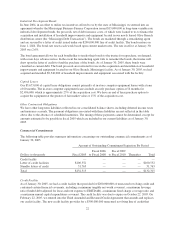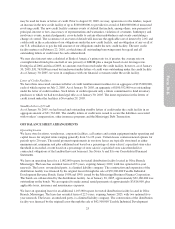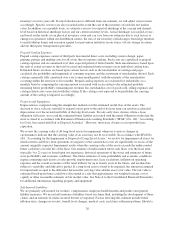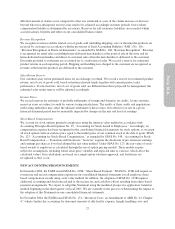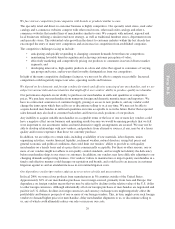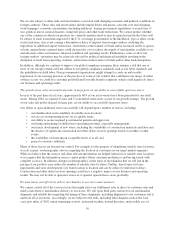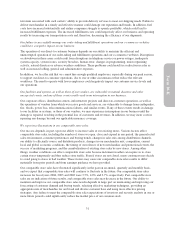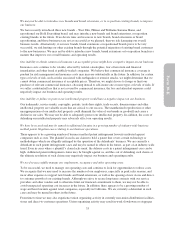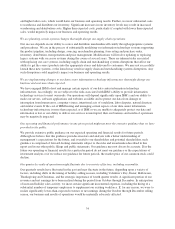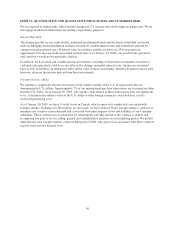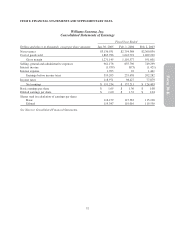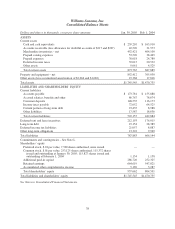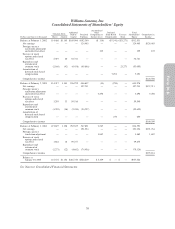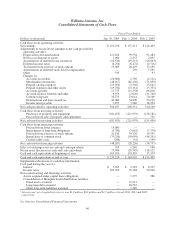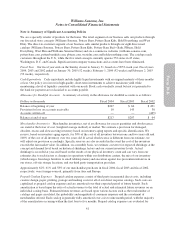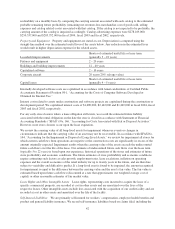Pottery Barn 2004 Annual Report Download - page 39
Download and view the complete annual report
Please find page 39 of the 2004 Pottery Barn annual report below. You can navigate through the pages in the report by either clicking on the pages listed below, or by using the keyword search tool below to find specific information within the annual report.Our failure to successfully manage the costs and performance of our catalog mailings might have a negative
impact on our business.
Postal rate increases, paper costs, printing costs and other catalog distribution costs affect the cost of our catalog
mailings. We rely on discounts from the basic postal rate structure, such as discounts for bulk mailings and
sorting by zip code and carrier routes. Our cost of paper has fluctuated significantly during the past three fiscal
years, and our paper costs are expected to increase in the future. Although we have entered into a long-term
contract for catalog printing, this contract offers no assurance that our catalog production costs will not
substantially increase following its expiration. Future increases in postal rates or paper or printing costs would
have a negative impact on our operating results to the extent that we are unable to pass such increases on directly
to customers or offset such increases by raising prices or by implementing more efficient printing, mailing,
delivery and order fulfillment systems.
We have historically experienced fluctuations in customer response to our catalogs. Customer response to our
catalogs is substantially dependent on merchandise assortment, merchandise availability and creative
presentation, as well as the sizing and timing of delivery of the catalogs. In addition, environmental organizations
may attempt to create an unfavorable impression of our paper use in catalogs. The failure to effectively produce
or distribute our catalogs could affect the timing of catalog delivery, which could cause customers to forego or
defer purchases.
We must successfully manage our Internet business.
The success of our Internet business depends, in part, on factors over which we have limited control. In addition
to changing consumer preferences and buying trends relating to Internet usage, we are vulnerable to certain
additional risks and uncertainties associated with the Internet, including changes in required technology
interfaces, website downtime and other technical failures, changes in applicable federal and state regulation,
security breaches, and consumer privacy concerns. Our failure to successfully respond to these risks and
uncertainties might adversely affect the sales in our Internet business, as well as damage our reputation and
brands.
Our failure to successfully anticipate merchandise returns might have a negative impact on our business.
We record a reserve for merchandise returns based on historical return trends together with current product sales
performance in each reporting period. If actual returns are greater than those projected by management,
additional sales returns might be recorded in the future. Actual merchandise returns may exceed our reserves. In
addition, to the extent that returned merchandise is damaged, we may not receive full retail value from the resale
or liquidation of the merchandise. Further, the introduction of new merchandise, changes in merchandise mix,
changes in consumer confidence, or other competitive and general economic conditions may cause actual returns
to exceed merchandise return reserves. Any significant increase in merchandise returns that exceeds our reserves
could negatively impact our business and operating results.
We must successfully manage the complexities associated with a multi-channel and multi-brand business.
During the past few years, with the launch and expansion of our Internet business, new brands and brand
expansions, our overall business has become substantially more complex. The changes in our business have
forced us to develop new expertise and face new challenges, risks and uncertainties. For example, we face the
risk that our Internet business might cannibalize a significant portion of our retail and catalog businesses. While
we recognize that our Internet sales cannot be entirely incremental to sales through our retail and catalog
channels, we seek to attract as many new customers as possible to our e-commerce websites. We continually
analyze the business results of our three channels and the relationships among the channels, in an effort to find
opportunities to build incremental sales. However, as our Internet business grows and as we add e-commerce
websites for more of our concepts, these increased Internet sales may cannibalize a portion of our retail and
catalog businesses.
32


